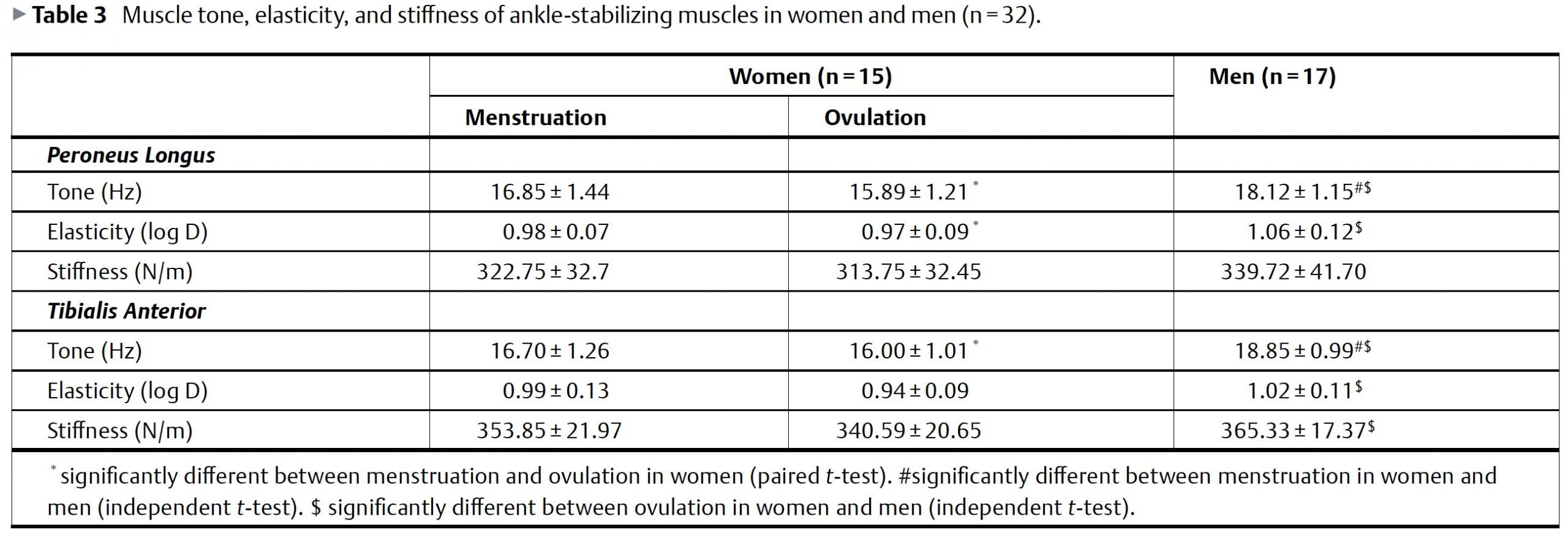Publications

Neuromuscular Control of Ankle-stabilizing Muscles-specific Effects of Sex and Menstrual Cycle
Authors: Iman Akef Khowailed 1, Haneul Lee 2
Affiliations:
- University of St Augustine for Health Sciences, College of Rehabilitative Sciences San Marcos California Campus
- Department of Physical Therapy, Gachon University – Medical Campus, Incheon, Korea
Journal: International Journal of Sports Medicine - September 2020, Volume 42, Issue 3, Pages 270-276 (DOI: 10.1055/a-1236-3654)
-
Field & Applications:
- Medical
- Neuromuscular control
- Injury prevention
- Women's health
The purpose of this study was to examine the differences in neuromuscular control and mechanical properties of the ankle-stabilizing muscles between men and women, and during different phases of menstrual cycle in women. Fifteen women with regular menstrual cycles and 17 male counterparts were included in this study. Electromyographic signals were recorded from the peroneus longus (PL) and tibialis anterior (TA) muscles while performing three balance tasks.
Muscle tone, stiffness, and elasticity of muscles were measured using a MyotonPRO in the resting position. Outcomes were measured twice (ovulation and early follicular phases) for women, while measurements were acquired only once for men.
Significantly higher tibialis anterior-peroneus longus co-contraction (TA/PL ratio) was observed in all balance tasks in women than in men (p< 0.05); however, significant differences between phases of the menstrual cycle were noted only in the 2 most difficult tasks (p< 0.05). A similar pattern was observed in the postural sway.
Keywords: estrogen, menstrual cycle, mechanical properties, sex-difference, lower limbs, neuromuscular activation

These results highlight the importance of sex-specific hormonal effects on neuromuscular control and mechanical properties, and as well as the differences during phases of the menstrual cycle. These insights assume significance in the context of developing neuromuscular strategies for the purpose of preventing lower extremity injuries during sports activities.


